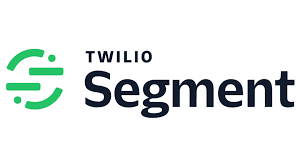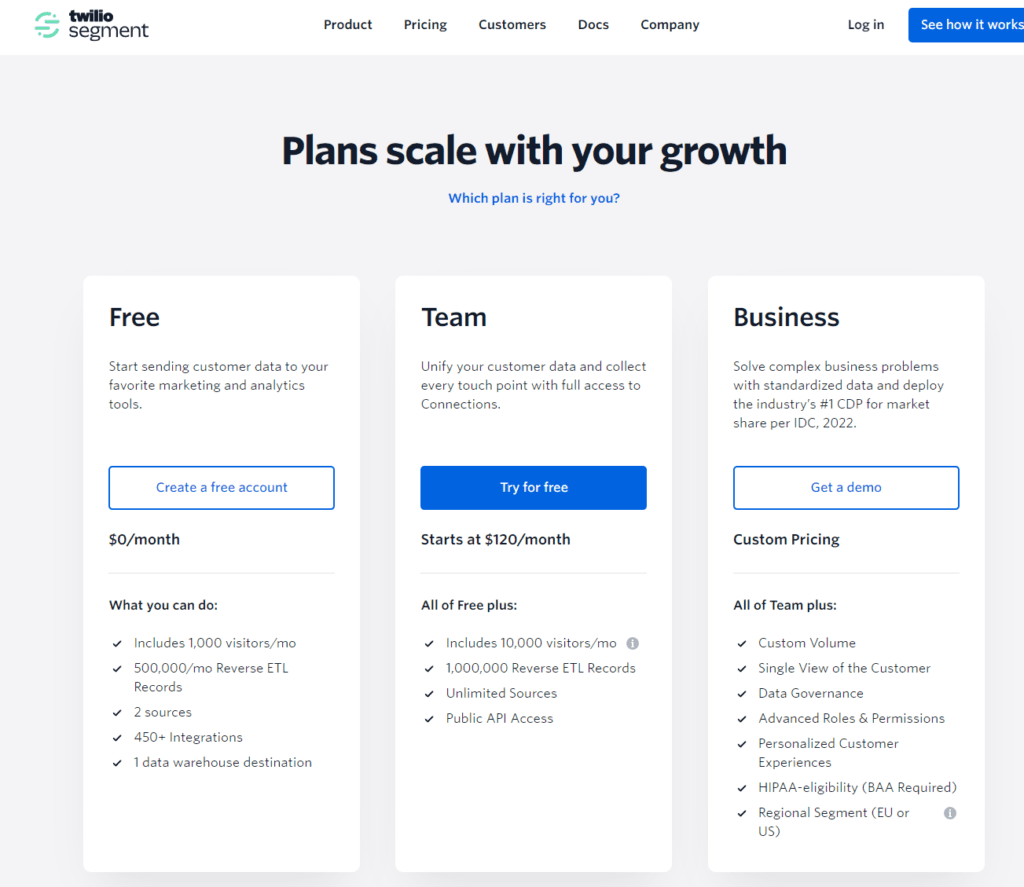In the digital age, leveraging analytics to drive business decisions has become non-negotiable. Among the myriad of tools available, Segment and Heap stand out, but for distinctly different reasons. Segment acts as a powerful conduit, adept at unifying and routing customer data across a plethora of analytics and marketing tools. Heap, on the other hand, offers a more focused approach, providing comprehensive behavioral analytics that enable businesses to understand every facet of the user journey. Choosing between these platforms isn’t just about selecting an analytics tool; it’s about shaping the future of how your business interacts with data. Let’s dive into a critical area of comparison: Data Collection and Automation.
Segment | Heap |
|---|---|
| G2 Score – 4.6 out of 5 stars | G2 Score – 4.4 out of 5 stars |
| TrustRadius Score – 8.3/10 | TrustRadius Score – 8.2/10 |
Data Collection and Automation
In the realm of analytics, the foundation of any insightful analysis is robust and comprehensive data collection. How Segment and Heap approach this foundational step significantly influences their utility for businesses.
Segment: The Unified Data Pipeline
Segment’s primary offering is its ability to act as a central hub for your customer data. It excels in collecting data from every touchpoint—be it your website, app, servers, or third-party tools—and routing this information to over 300 integrations. This capability ensures that data from disparate sources can be unified, creating a comprehensive view of the customer journey.
One of Segment’s standout features is its emphasis on automation and flexibility in data collection. By automatically capturing a wide array of events and properties, Segment reduces the manual effort typically associated with tagging and tracking user interactions. However, the power of Segment’s automated data collection shines brightest when tailored through its customizable tracking plans, allowing businesses to fine-tune what data is collected based on specific needs.
Heap: Automatic and Retroactive Data Capture
Heap takes a unique approach to data collection by automatically tracking every interaction on your website or mobile app without requiring manual event tracking setup. This means every click, form submission, page view, and more are captured out of the box, dramatically reducing the time and technical overhead usually needed to start gathering actionable data.
The revolutionary aspect of Heap’s data collection methodology is its retroactive analysis capability. Since Heap captures all interactions from the start, analysts and marketers can define events and segments after the fact, without needing to have specified what to track upfront. This enables businesses to explore historical data in ways that aren’t possible with tools requiring predefined events, offering unparalleled flexibility in data analysis.
Analytics and Insights
While both Segment and Heap excel in collecting comprehensive data, the way they analyze and present insights varies, reflecting their distinct approaches to helping businesses leverage data effectively.
Segment: The Integrator for Rich Analytics
Segment itself does not specialize in analytics; rather, it excels as a data infrastructure tool that routes data to other analytics platforms where deep analysis can occur. This approach allows businesses to choose the best analytics tools that suit their specific needs, whether it’s for detailed behavioral analysis, conversion tracking, or complex data modeling. Segment’s strength lies in its ability to make data accessible across a variety of analytics tools, enabling rich, multi-faceted insights by leveraging the specialized capabilities of each integrated tool.
For businesses that rely on a suite of analytics solutions, Segment’s role as an integrator can significantly enhance the depth and breadth of insights available, though it requires managing multiple platforms and understanding their unique analytics offerings.
Heap: Built-in Analytics for Immediate Insights
Contrary to Segment’s integrative approach, Heap offers built-in analytics capabilities, focusing on providing immediate insights directly within its platform. Heap’s analytics are designed to be user-friendly, enabling teams to quickly visualize user journeys, perform cohort analyses, and track conversions without needing to export data to another tool. The platform’s automatic data capture underpins its analytics, allowing for retroactive analysis and the flexibility to explore data without predefined events.
Heap’s strength is its simplicity and immediacy in delivering actionable insights, particularly around user behavior and website optimization. This makes it especially valuable for product teams and marketers looking to make data-driven decisions quickly, without the complexity of juggling multiple analytics tools.

Related: Check out our free SEO suite

Customer Segmentation and Personalization
The capability to segment customers based on behavior, preferences, and other key data points, and to personalize experiences accordingly, is paramount in today’s market. Segment and Heap offer different approaches to empower businesses with these capabilities. This area highlights how each platform supports businesses in understanding their audiences better and tailoring experiences to meet diverse customer needs effectively.
Segment: Facilitating Advanced Segmentation Through Integration
Segment’s power in customer segmentation lies in its ability to collect and route detailed customer data to specialized tools designed for segmentation and personalization. By serving as the data backbone, Segment enables a level of detail and flexibility in segmentation that can be as broad or as nuanced as your tools and strategy demand. This approach allows businesses to leverage advanced analytics, marketing automation, and personalization platforms to create highly targeted customer segments based on a comprehensive dataset.
Furthermore, Segment’s integration capabilities mean that once segments are defined, they can be activated across a wide range of platforms, from email marketing to customer success tools, ensuring a consistent and personalized customer experience across all touchpoints.
Heap: Providing Immediate Insights for Segmentation
Heap approaches segmentation with a focus on ease and immediacy, leveraging its automatic data collection to allow businesses to segment users based on virtually any interaction captured on the website or app. This enables teams to quickly define and analyze segments without the need for predefined events or complex setup processes.
Heap’s strength in segmentation also extends to its ability to visualize the customer journey for different segments, offering insights into how various groups of users navigate through the product. This immediate, behavior-driven segmentation can be a powerful tool for businesses looking to quickly adapt their strategies and personalize user experiences based on real-time insights.
Integration Ecosystem and Flexibility
The broader the range of integrations an analytics platform supports, the more value it can bring to your business by enabling a unified view across different functions and data sources. The capacity of an analytics tool to seamlessly integrate with other software and services determines how well it can fit into and enhance your existing tech stack.
Segment: The Central Hub for Data Integration
Segment’s core proposition is its role as a central hub for data integration, boasting an extensive ecosystem of over 300 integrations spanning analytics, marketing, CRM, customer support, and data warehousing tools, among others. This vast network makes Segment incredibly flexible, capable of fitting into almost any tech stack and enhancing data flow between tools.
The platform’s strength in integration provides businesses the flexibility to choose best-of-breed tools for each function while ensuring data consistency and accessibility across the board. For businesses that use a wide variety of applications and services, Segment’s ability to centralize and streamline data integration is invaluable, though it requires a strategic approach to set up and manage these integrations effectively.
Heap: Focused Integrations for Enhanced Analytics
While Heap may not offer the sheer volume of integrations available in Segment, it focuses on key integrations that enhance its analytics capabilities. Heap integrates with popular tools for marketing automation, A/B testing, customer relationship management, and more, ensuring that its rich behavioral analytics can be leveraged across other critical business functions.
Heap’s integration strategy is designed to ensure that businesses can easily connect their analytics insights with action tools, facilitating immediate application of insights into marketing campaigns, product changes, or customer outreach efforts. This focused approach allows for a more streamlined integration experience, particularly suited for businesses that prioritize depth of insights over breadth of integration.
User Experience (UX) and Interface Design
A well-designed user interface and thoughtful user experience are essential for analytics platforms, as they directly impact how intuitively teams can interact with data, discover insights, and implement data-driven strategies. The ease with which teams can navigate, utilize, and derive value from an analytics platform is critical for its adoption and effective use within a business. A platform’s UX and design not only affect day-to-day operations but also influence the broader strategic application of insights derived from data.
Segment: Complex Yet Streamlined
Segment offers a robust platform designed to handle complex data infrastructures with a surprisingly streamlined interface. While the nature of data integration and management inherently involves a degree of complexity, Segment strives to make the user experience as intuitive as possible. The platform’s dashboard and setup processes are designed with clarity in mind, guiding users through data source connections, destination configurations, and data flow setups.
However, the depth of Segment’s capabilities means that there can be a learning curve, especially for users unfamiliar with data infrastructure concepts or those new to managing complex data ecosystems. Segment counters this with extensive documentation, educational resources, and customer support to aid users in navigating the platform.
Heap: Intuitive Analytics for Immediate Use
Heap differentiates itself with a focus on providing an intuitive analytics experience, designed to allow users to start analyzing user behavior with minimal setup. The platform’s interface is clean and user-friendly, emphasizing visual data exploration, easy-to-understand reports, and straightforward tools for defining events and segments.
This emphasis on usability makes Heap particularly appealing for teams looking for quick insights without the need for extensive technical training. Heap’s design philosophy ensures that valuable data insights are accessible to a wide range of users within an organization, from product managers and marketers to UX designers and executives.
Pricing
Segment:

Heap:

Conclusion
Concluding our exploration into Segment and Heap, it’s evident that both platforms serve distinct purposes within the analytics ecosystem, catering to different organizational needs and strategic objectives.
Segment emerges as a robust data infrastructure platform, ideal for businesses looking to consolidate and utilize their data across a wide array of tools and systems. Its strength lies in its ability to act as the central hub for customer data, enabling complex integrations and facilitating a unified view of the customer journey across multiple touchpoints. Segment is particularly well-suited for larger organizations or those with diverse tech stacks, offering the flexibility to create a customized analytics ecosystem that leverages the best features of integrated tools.
Heap, on the other hand, offers a more streamlined approach, focusing on providing immediate, actionable insights into user behavior with minimal setup. Its automatic data collection and retroactive analysis capabilities make it a powerful option for businesses seeking to quickly understand and optimize user interactions on their digital platforms. Heap is especially valuable for product teams and marketers aiming to make data-driven decisions without the overhead of managing multiple analytics solutions.
Read Next:
- GetResponse vs Zoho Campaigns: The Best Email Marketing Tool for 2024
- AWeber vs ActiveCampaign: The Best Email Marketing Tool
- Constant Contact vs Campaigner: Best Email Marketing Tool
- GetResponse vs Omnisend: The Best Email Marketing Tool for 2024
- AWeber vs Benchmark Email: The Best Email Marketing Tool






















Comments are closed.